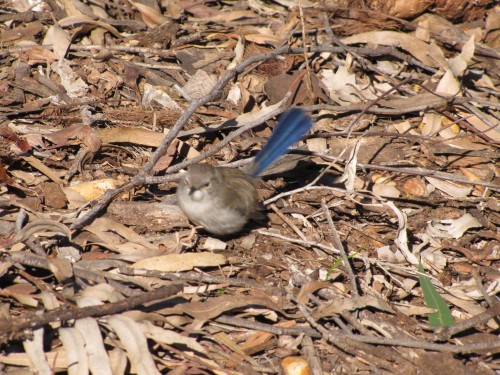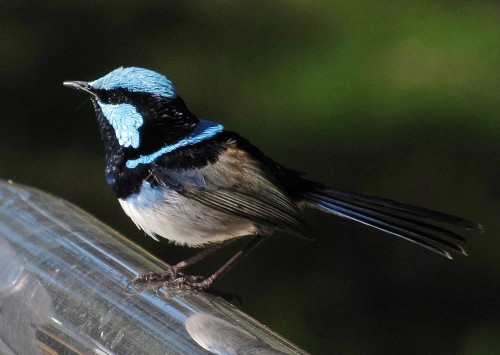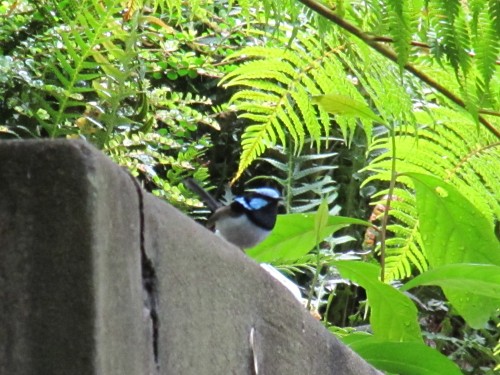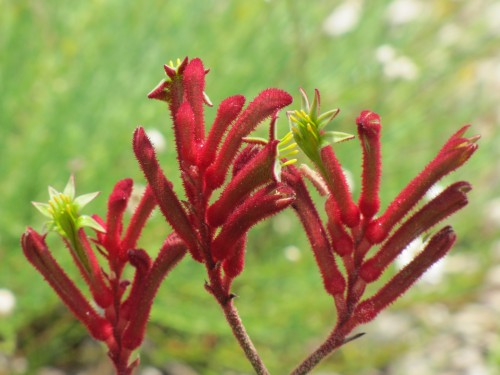Great birding moments #35 Female Superb Fairy-wren
I have a confession to make.
I have just informed my wife that I insist on doing the clothes washing.
Reluctantly she has agreed to my request. My reason is simple; many times in recent years I have had some wonderful birding experiences while hanging out the washing on the clothes line – or bringing in the dry clothes. My eyes are always gazing upwards when doing this easy household chore and I have seen some great birds during this activity. Perhaps the most stunning was seeing a Peregrine falcon at top speed heading for what I think were some pigeons. Whoosh!
Adding to the birding dimension is the fact that our clothes-line is surrounded by trees and low to medium Australian Native plants (see me wife’s site here), so there is always some bird activity all around me. Distractions are common!
My latest Great Birding Moment happened yesterday while taking in the washing. I had almost finished and a female Superb Fairy-wren landed on the clothes-line next to me. As it cheerily chattered to me I could have reached out and patted it. It stayed there calling quietly to me for nearly a minute – a whole magical minute!
How wonderful.
I felt so privileged – and truly blessed.
Good birding.
Further reading:
- Great Birding Moments #1-35 The above article is one of a series of articles along a similar theme.
A visit to the Australian Botanic Gardens Mt Annan
On our recent trip to visit family in Sydney we were determined to visit the Australian Botanic Gardens Mt Annan at Campbelltown in the south eastern part of greater Sydney. In recent visits to our son it has never worked out to take a day trip to these gardens. In fact, our last – and only visit – was in April 2000. Our memories of that visit were getting very hazy, though I do remember seeing Double-barred finches there – my one and only sighting of this species.
The Australian Botanic Gardens Mt Annan are part of the Royal Botanic Gardens Sydney and are run by the same Trust. The gardens are 416 hectares in size and include hills, fern gullies and creeks, and lakes. One section even boasts a decent mountain bike track. About 4000 Australian plants are on display in these gardens. Unfortunately, very few were flowering at the time of our visit. We could only imagine what it would look like in the spring. (Note to self: organise a visit in spring!)
Despite the lack of flowers I was still pleased to record about 40 bird species during our stay. One of them was a shy Superb Fairy-wren shown above. He was skulking around in the undergrowth in the fern gully, just where the light was too poor for photos. His brief appearance in a lighter spot was not quite long enough for a good photo.
Below I’ve shown one of the plants in flower on show during our visit.
I will write more about the birds I saw in coming days.
New Holland Honeyeaters feeding
We have many Australian native plants in our garden, and on our property. They are a magnet for the many honeyeaters we have resident around the garden.
I particularly like the many varieties of Eremophila we have growing, as these seem to flower for long periods of time creating a steady supply of food for the birds. The species shown in the photos above and below is Eremophila youngii which particularly appeals to the New Holland Honeyeaters that frequent this particular plant. An added bonus is that we can see this plant and the birds coming to it from the spot where we usually eat our meals and read the daily paper. It is also a few metres from the bird bath, another attractive part of the garden for our bird friends.
Further reading:
- Mallee Native Plant Nursery – eremophila – from the archives of my wife’s blog.
- Eremophila youngii – article on my wife’s blog
Singing Honeyeaters and native plants
The Singing Honeyeater is a common species in suitable habitat throughout much of Australia. It tends to be absent only from the eastern coastal areas, most of Victoria (except the south coast), and the far north of Queensland and the Northern Territory. It’s preferred habitats include mallee scrubs, mulga, roadside vegetation, orchards, vineyards and gardens. It tends to be rather solitary in habit. On occasions I have seen small loose flocks of up to four or five birds, usually where the vegetation is dense, for example, coastal dunes.
Resident Breeding species
The Singing Honeyeater is a resident breeding species in our garden. Their numbers never seem to go over about four or five on our 2 hectare (5 acre) block of land. The dominant plant species is mallee scrub (click here for a photo). They were perhaps more numerous more than ten years ago, but in recent times the New Holland Honeyeaters have become the dominant – and very bossy – species.
Updated November 2013
Eremophila glabra
The resident Singing Honeyeaters are regular visitors to our bird baths. I don’t think I’ve seen them actually bathing in the water; they just tend to come for a drink. Next to the bird bath is a sprawling bush called Eremophila glabra. In the photo this plant has the bright red tube-shaped flowers. (Click on the photo to enlarge). The honeyeaters frequently stay for five minutes or more feeding on these flowers. A quick return trip to the water for a drink and then they are off to feed elsewhere.
Dripper systems
In the photo you will observe a black hose in front of the bird. This is part of our watering system. We have installed many hundreds of metres of similar hoses throughout our garden and orchard. Wherever there is a plant we place a dripper. Each dripper then allows a steady stream of drips to the plant when the tap is turned on. We have timers on each tap which then turn off the water to the dripper hoses after a set time, usually one or two hours.
Severe drought
Many Australian gardeners have recently moved to this system because of the severe drought we are experiencing. Many areas are on severe water restrictions. In some places you cannot even use dripper systems like this one. We have certainly done our bit to conserve water because we’ve been using drippers for over 20 years. Most people are only installing them now.
Plants in our garden
For more photos and information about the plants in our garden and in our district go to Mallee Native Plants Nursery, my wife’s blog about our beautiful Australian plants.







